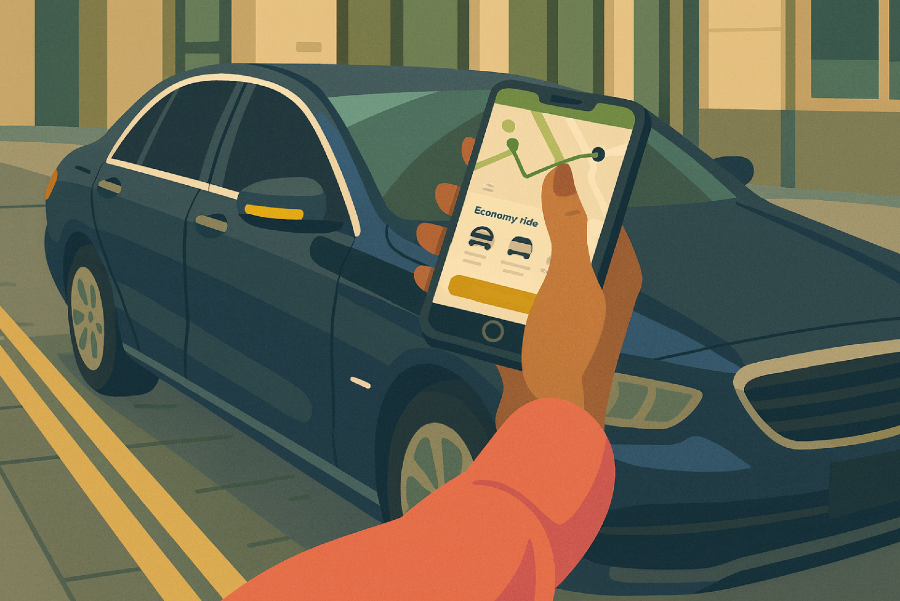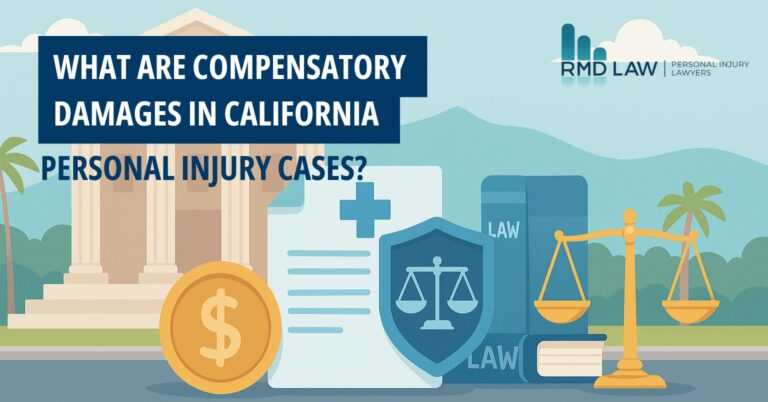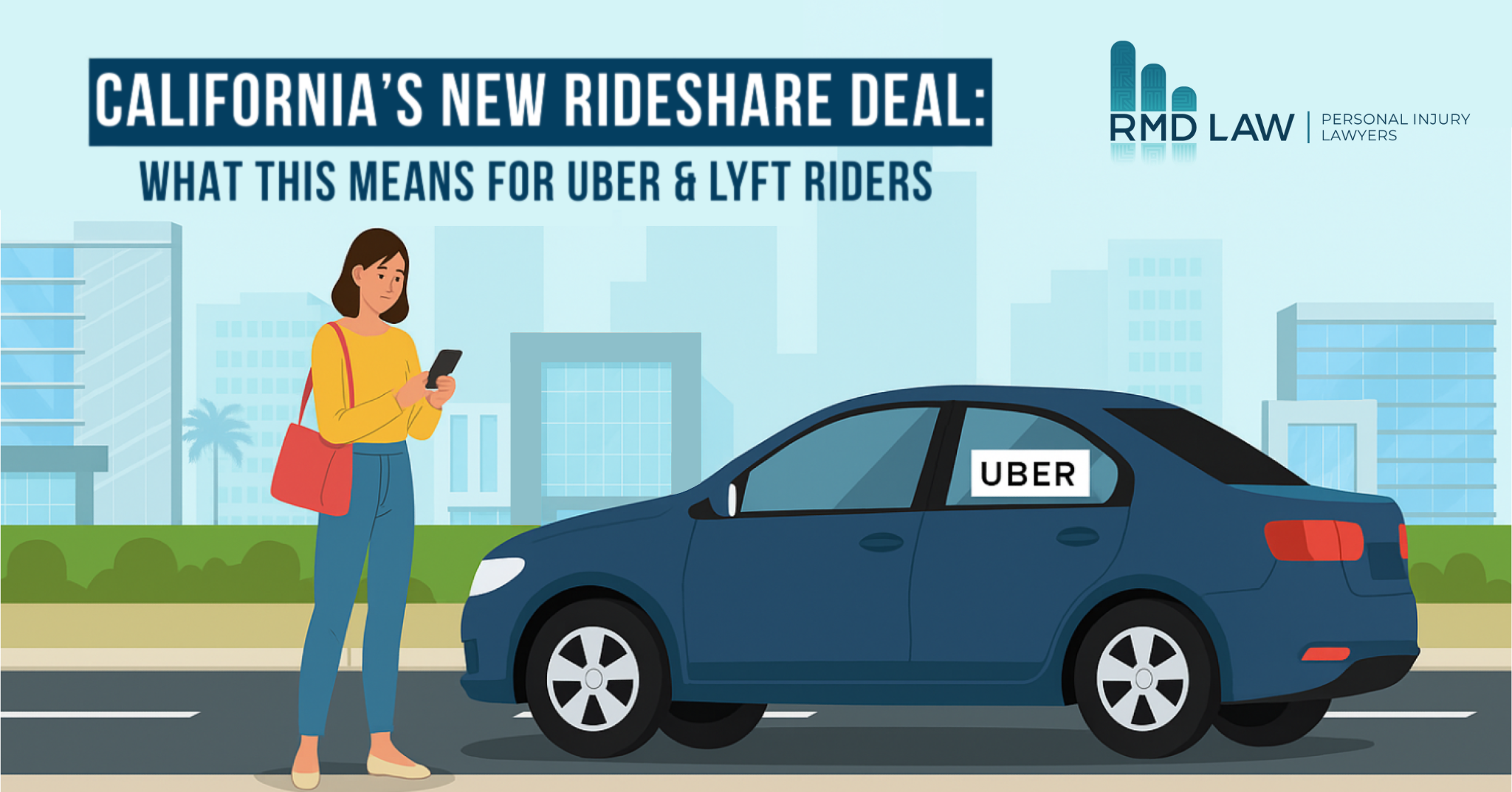
Key Takeaways:
California’s New Rideshare Laws Reduce Insurance Coverage for Injured Passengers
-
Under the new California rideshare deal, Uber and Lyft are no longer required to carry $1 million in uninsured/underinsured motorist (UM/UIM) coverage.
-
The new minimum is just $60,000 per person and $300,000 per accident, leaving many crash victims underinsured – especially after serious injuries.
-
Riders may now need to rely on their own auto or health insurance, and accident claims are expected to become more complex.
Fares May Stay Low, But Riders Face More Financial Risk After an Accident
-
While the California rideshare union law aims to improve driver rights and keep fares affordable, the trade-off is less financial protection for riders.
-
Although prices may stabilize in the short term, the real cost could hit passengers later — especially if they’re injured in a crash caused by an uninsured driver and expected to pay out of pocket.
A Personal Injury Lawyer Can Help You Navigate the New Rideshare Legal Landscape
-
Injured in an Uber or Lyft? A California personal injury lawyer can help you recover compensation under the state’s new rideshare laws.
-
From locating all sources of insurance to holding at-fault parties accountable, legal help is now more critical than ever.
-
Don’t assume you’re covered – speak with an attorney if you’ve been hurt in a rideshare accident.
What California’s Rideshare Deal Means for Passengers
Rideshare in California is About To Change
California just passed a landmark rideshare deal that’s making headlines across the state. In a carefully negotiated compromise between labor groups, lawmakers, and rideshare giants like Uber and Lyft, the new legislation grants rideshare drivers the right to unionize – a historic shift in how gig workers can advocate for better wages and working conditions.
But to get there, the state also agreed to reduce a critical layer of insurance protection: the amount of uninsured/underinsured motorist (UM/UIM) coverage that rideshare companies must carry.
This sweeping change in California rideshare laws could reshape what it means to ride safely in an Uber or Lyft. From how much your ride costs to what happens if you’re injured in a crash caused by an uninsured driver, riders across the state will now face a very different legal and financial landscape.
If you rely on rideshare apps to get to work, school, or social events, this blog breaks down everything you need to know. We’ll explain how the California rideshare deal could affect your fares, your safety, and your legal rights – especially in the event of an accident. And how a rideshare accident lawyer can help you, before and after the deal goes into effect. Whether you’re a frequent passenger, a fellow driver on the road, or someone concerned about insurance protections, now is the time to get informed.
California’s New Rideshare Deal
California has struck a deal that could change your Uber or Lyft experience. In late 2025, state leaders, labor groups, and rideshare companies agreed to let about 800,000 rideshare drivers join a union for the first time (meaning hundreds of thousands of gig workers will be directly impacted by the new law) – while also slashing a key insurance requirement from $1 million to $60,000 per person (and $300,000 per accident) for crashes involving uninsured or underinsured drivers.
This compromise ends years of battles over whether drivers are employees or contractors and how much protection rideshare companies must provide. Why should riders care? Because fares, safety, and your protection in an accident are all on the line under this new California rideshare deal.
Will Rides Get Cheaper or More Expensive?
One immediate effect of the deal is lower insurance costs for Uber and Lyft. The new law (SB 371) slashes the required uninsured/underinsured motorist coverage from $1 million down to $60,000 per individual and $300,000 per accident. Rideshare companies had complained that the old $1 million coverage drove up their expenses (far above what taxis must carry) and put upward pressure on fares. Now that this cost is drastically reduced, Uber and Lyft claim riders will benefit through more affordable rides. In fact, Lyft’s public policy director praised the deal for “bringing runaway insurance costs under control,” noting that the legislation lowers costs for both companies and riders, making rideshare more affordable overall, and helps keep rideshare fares in check without cutting necessary protections.
However, empowering drivers to unionize could eventually raise labor costs – for example, if a union negotiates higher pay or benefits. Industry observers note that Uber and Lyft agreed to the union in large part because they secured relief from the pricey insurance mandate, effectively offsetting future higher driver wages with insurance savings. In other words, the companies accepted a potential rise in driver pay only after winning a major cut in insurance obligations.
Over the long term, if driver pay increases substantially, riders could see fares creep up to cover those costs. But in the near term, passengers are more likely to see stable or slightly lower fares. The author of the insurance bill emphasized his goal was to lower fares for people who rely on rideshare for work, school, or medical appointments. By removing a major expense (the $1 million insurance policy that was baked into ride fees), the deal aims to prevent fare hikes and keep Uber/Lyft rides accessible. Bottom line: don’t expect a sudden price drop on your next ride, but the compromise should stabilize fares and avoid the upward price spiral that gig companies warned about.

Does This Affect Rider Safety?
From a pure driving standpoint, cutting insurance coverage doesn’t make Uber or Lyft rides more dangerous – it doesn’t change how carefully drivers operate their vehicles. The new law doesn’t touch requirements like background checks, vehicle inspections, or DUI policies that affect who can drive. In fact, the insurance change is mostly about cost. Uber and Lyft argued that the old $1 million coverage was “unnecessary” and even acted as a magnet for lawsuits. Reducing it might discourage questionable or frivolous claims after minor crashes, which could indirectly save money.
However, what does change is the financial safety net if an accident happens. The required uninsured motorist (UM) coverage exists to protect riders (and drivers) when someone else causes a crash and lacks adequate insurance. Slashing that coverage to $60,000 means significantly less money available to injury victims after a serious accident. Consumer advocates warn that this shift “shifts the burden and potential remaining liability to consumers”, or even onto public programs, if the $60,000 cap doesn’t cover someone’s medical bills. In plain terms, riders could be left paying out-of-pocket for injuries caused by an uninsured driver, once Uber/Lyft’s now-limited policy is exhausted.
However, the new driver union could eventually push for changes that benefit rider safety and experience. With collective bargaining, drivers may advocate for things like better training, stricter background check enforcement, or fairer deactivation appeals processes for drivers. Unionization efforts are also focused on expanding workplace rights and labor rights for drivers, creating stronger voices for gig workers in the industry. For example, drivers having a say in policies might mean keeping only the safest, best-rated drivers on the platform and ensuring they aren’t unfairly kicked off without cause.
Unions in other states have also fought for practical improvements like bathroom access and reasonable break times for drivers – which might not seem directly related to riders, but a less stressed, healthier driver is a safer driver. It’s possible that through union negotiations, drivers will push for safety measures (such as improved vehicle safety standards or more accountability from the companies on rider misconduct) that indirectly improve passenger safety. However, these changes remain to be seen, and much will depend on how the union prioritizes issues.
The deal doesn’t make rides inherently more dangerous, but it does reduce the “financial safety net” that riders rely on if something goes wrong. There is less cushion if you get hurt, even though the likelihood of an accident on any given ride remains the same (and still very low). Riders should be aware of this trade-off: you’re saving a bit on fares in exchange for taking on more risk in worst-case scenarios.
Recent Rideshare Accident Statistics
Over the past five years, the rapid growth of ridesharing has been accompanied by notable impacts on traffic safety. These changes reflect broader trends in the transportation industry, where regulatory compliance and safety standards are critical concerns. Below are some key statistics showing the progression of Uber/Lyft-related crashes and their consequences:
-
2017: 49 people were killed in Uber-related crashes in the U.S. (Uber’s first safety report).
-
2018: 58 people were killed in Uber-related crashes – an increase from the prior year. (Total fatalities in 2017–2018 reached 107 across 97 fatal Uber crashes.)
-
2019–2020: 101 individuals lost their lives in 91 fatal crashes involving Uber vehicles. (This two-year period included the early pandemic in 2020, which saw a spike in nationwide traffic fatalities.)
-
2021–2022: 153 motor vehicle fatalities were reported in Uber-related crashes – a ~40% jump from the 2019–2020 period. (This increase aligns with the rebound in traffic volume and risky driving post-pandemic.)
-
Overall Impact: Studies have found that the introduction of rideshare services is associated with roughly a 3% annual increase in traffic fatalities in U.S. cities. This translates to an estimated ~1,000 additional deaths per year attributed in part to the rise of Uber and Lyft, as increased vehicle miles and congestion lead to more crashes.
These statistics underscore a sobering reality: as ridesharing became more popular, the total number of crashes and crash-related deaths have tended to rise. Uber and Lyft maintain that rideshare is still very safe on a per-trip basis – for instance, Uber reports that 99.999% of trips end without serious safety incidents. Even so, the absolute number of accidents has grown simply because there are so many more drivers and miles on the road due to rideshare.
Public data from California is limited (the state regulatory agency has been criticized for not transparently tracking Uber/Lyft collisions), but the national trends likely reflect what we see on California streets as well. As a rider, it’s worth being aware that the risk of an accident, while still small per ride, is not zero – and it has inched up with the proliferation of rideshare vehicles. Always remember to buckle up, stay alert, and take advantage of the safety features in the app (like sharing your trip details with a friend) to ensure your rides are as safe as possible.
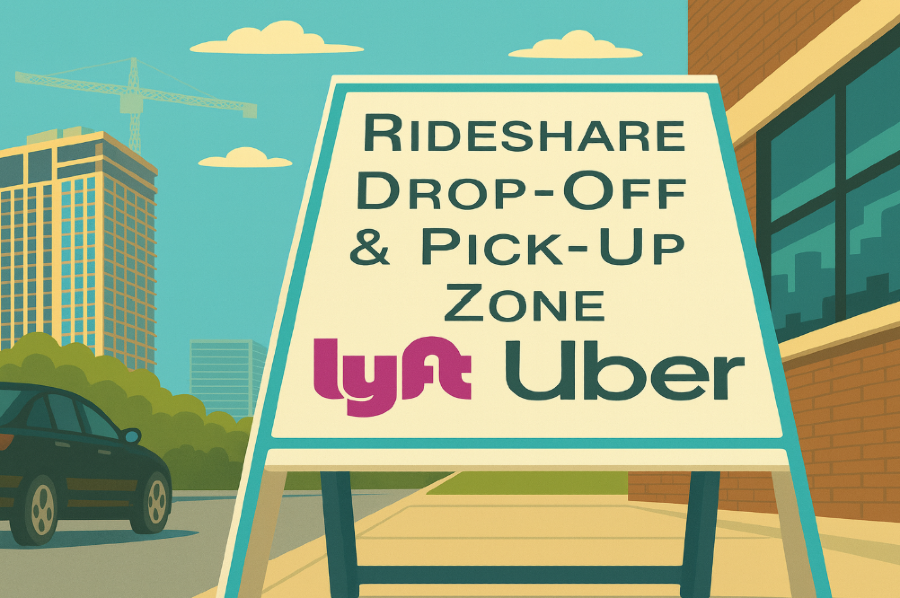
What Happens If You’re Hurt in an Uber or Lyft Accident Now?
One of the most important changes for riders is what happens after an Uber and Lyft accident, especially if a highly unfortunate scenario occurs – say, you’re in an Uber that gets hit by a driver with no insurance. Before this deal, Uber and Lyft’s insurance would have had you covered up to $1 million under their uninsured/underinsured motorist policy. That meant if you, as a passenger, were injured by an uninsured driver (or by a hit-and-run), there was a large $1 million pool of coverage to pay for medical bills, lost wages, and pain and suffering. In many cases, that $1 million could cover even very serious injuries or at least provide a substantial cushion.
Now, after the new law, that protection has shrunk dramatically – to just $60,000 per injured person, up to $300,000 total per accident. Let’s put that in perspective: $60,000 may sound like a lot, but in a severe crash it might only cover a quick trip to the ER and a few days in the hospital. It’s a fraction of the potential costs if someone needs surgery, ongoing treatment, or suffers a long-term disability. In a multi-victim accident, the $300,000 aggregate cap could be even more limiting. For example, if several people are hurt in the Uber, that money could be divided up and run out fast.
So what can riders do to protect themselves? Here are a few considerations:
-
Rely on your own insurance: If you have your own auto policy with Uninsured/Underinsured Motorist (UM/UIM) coverage, it can typically step in to cover you as a passenger in someone else’s car. Many people don’t realize this, but your personal car insurance’s UM coverage can pay for your injuries if you’re in an Uber or Lyft and an uninsured driver hits you. With the rideshare companies now providing only $60k, it’s more important than ever to carry adequate UM coverage on your own policy if you frequently use rideshares. Likewise, health insurance can cover medical bills, but you may face copays and deductibles that, in the past, might have been paid by that $1 million UM policy.
-
Legal recourse against the at-fault driver: You always have the option to sue the driver who caused the crash, but if they had no insurance, there’s a good chance they have few assets. In fact, legal commentators note that with this deal, “victims might be left to pursue drivers personally, and the average Uber driver is likely judgment-proof”. In other words, if the person who hit you has no insurance or money, a lawsuit might yield an uncollectible judgment. The practical reality is that the rideshare company’s policy was the most reliable source of recovery in these situations – and that source just got a lot smaller.
-
More complex claims: With less insurance money available, accident claims may become more complicated and contentious. Riders (and their lawyers) might now have to piece together compensation from multiple sources – the limited Uber/Lyft policy, your own insurance, and possibly the at-fault driver – instead of having one big policy cover everything. We can expect more disputes over who pays what. Injured passengers might need to explore every avenue for coverage (for example, if the at-fault driver had some insurance, you’d tap that first; then Uber/Lyft’s $60k UM; then your own UM, etc.). This patchwork can lead to delays and headaches that weren’t as common when a single $1 million policy stood behind the accident.
If you do find yourself hurt in an Uber or Lyft crash under the new rules, it’s wise to consult with a personal injury attorney or your insurance agent early. They can help identify what coverage is available. The reduced coverage doesn’t mean you’ll be left with nothing – but it does mean you’ll need to be proactive and possibly fight harder to get fully compensated. Unfortunately, some riders may end up under-compensated for serious injuries, which is why it’s critical to know your own insurance and rights in this new landscape.
How Does This Affect Other Drivers on the Road?
It’s not just rideshare passengers who are affected by the insurance rollback – other drivers (and pedestrians) sharing the road are indirectly affected too. Here’s how different accident scenarios involving an Uber or Lyft play out now:
If a rideshare driver causes a crash and you’re the other party (another driver, a cyclist, a pedestrian, etc.):
Good news: Nothing changes for you. Uber and Lyft are still required to carry a $1 million liability policy for any crashes where their driver is at fault. If an Uber driver runs a red light and hits your car, for example, the company’s $1 million liability insurance should cover your car damage, medical bills, etc., up to that limit (just as it did before).
The recent law did not reduce the $1 million liability coverage for at-fault accidents caused by the Uber/Lyft driver. So if an Uber or Lyft driver is to blame, you remain as protected as you were under the old rules. (For context, this $1 million liability coverage is still much higher than what taxis in California typically carry for accidents they cause.)
If another driver (not the Uber driver) causes a crash involving an Uber/Lyft and that at-fault driver has no insurance (or not enough):
This is where things have changed, and not for the better. Let’s say you’re driving and get into a collision with an Uber because a third driver ran a stop sign and hit both of you – and that third driver turns out to be uninsured. Under the old system, Uber’s $1 million uninsured motorist policy could have helped cover everyone’s injuries in the Uber vehicle. Now, that Uber’s policy would provide at most $60,000 per person injured, and $300,000 total – a drastic reduction.
If you were a victim in that pileup (even not in the Uber), you won’t have any claim to Uber/Lyft’s UM coverage (since those policies only cover people in the rideshare vehicle). You’d have to rely on your own insurance or other sources. Meanwhile, the Uber passenger and driver only have $60k each from the Uber policy for their injuries, where before they could have had up to $1 million covering their damages. In a multi-car accident, those funds can evaporate quickly.
In short, if an uninsured motorist causes a crash that injures people in a rideshare and others on the road, the overall pot of insurance available is far smaller than before. The risk and costs are effectively shifted onto the victims. As one commentator put it, the risk has been shifted onto drivers and riders – victims might be left to fend for themselves or pursue claims against an essentially uncollectable driver.
If you are hit by an Uber/Lyft driver who is not at fault (for example, a reckless uninsured driver hits an Uber, which then hits your car):
This is a combination of the above scenarios. Since the Uber driver isn’t at fault, their $1 million liability coverage won’t apply to your damages. The at-fault uninsured driver is responsible – but if they can’t pay, you’re in a tough spot. Uber’s reduced UM coverage would cover injuries to the Uber driver and passenger, but not you as an unrelated third party.
Previously, one could argue in certain situations that the rideshare’s insurer might indirectly cover some damages (through subrogation later), but with the cap now $60k per person, there’s even less to go around. The net effect for other road users is that there is less secondary insurance in the system to catch you if you’re involved in a crash with a rideshare vehicle through no fault of your own. You’ll mostly be relying on your own insurance (like your own UM coverage or health insurance) if the at-fault party lacks coverage.
The deal’s insurance rollback primarily protects Uber and Lyft’s bottom line, but it offers no protection boost for other drivers or pedestrians – and in some scenarios leaves less coverage available overall. If a rideshare driver hits you, you’re still covered by their $1 million liability policy. But if you’re entangled in an accident caused by someone else who’s uninsured, the presence of an Uber/Lyft no longer provides that extra $1 million safety net that it used to for the people inside the rideshare.
Risk that used to be covered by the companies has now been shifted to the state’s residents – meaning riders and everyday drivers on the road. It’s yet another reason all drivers should consider carrying uninsured motorist coverage themselves, given the high rate of uninsured drivers out there.
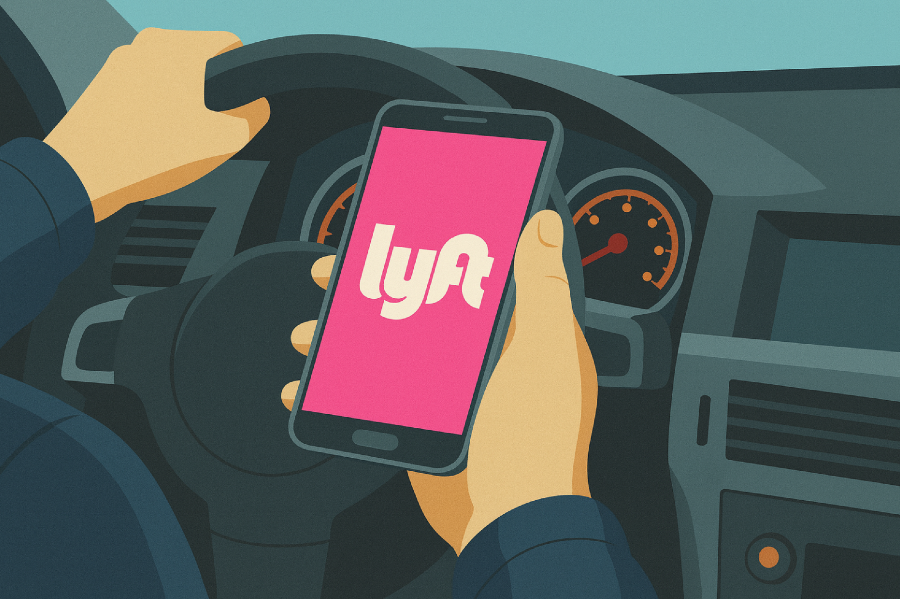
Key Questions Riders Should Be Asking
Even with these changes set to take effect, there are several unanswered questions and things riders may want to think about going forward. Policies around ride requests, including who can make a ride request and how drivers respond to requests, may also be affected by the new laws.
Will Uber and Lyft actually pass insurance savings to customers?
The companies lobbied for lower insurance specifically to reduce costs, and they’ve promised this will help keep rides affordable. Recent Lyft laws in California regulate insurance requirements, driver rules, and passenger rights, directly impacting how these savings might be realized. In theory, if insurance premiums drop, those savings could be used to hold down fare prices (or even eliminate some of those extra safety fees or surcharges in your bill).
Riders should watch their fare receipts in the coming months: will the “California Driver Benefits” fee (or similar) get smaller or disappear? Thus far, Uber/Lyft have not announced any fare cuts, so it remains to be seen whether passengers will actually save money or if the companies will pocket most of the difference. Given the competitive nature of rideshare pricing, there is some incentive for them to pass along savings – but only time will tell.
Are you personally covered enough if you take rideshares often?
This is a good time to review your own insurance. If you don’t own a car (and thus don’t have auto insurance), realize that as a frequent rideshare rider you now have less built-in protection after an accident. You might consider purchasing a non-owner auto insurance policy that includes uninsured motorist coverage, or at least know what your health insurance would cover if you’re injured as a passenger.
If you do have a car and insurance, check your policy’s UM/UIM coverage limits. Many people carry the state minimum or nothing at all for uninsured coverage – which could leave you exposed. Increasing your UM coverage limit might be a wise move if you find yourself in Ubers often. In short, make sure you have a fallback plan for medical bills and losses if a bad crash happens, since Uber and Lyft’s insurance now might run out fast.
Will driver unions push for safety measures that improve the rider experience?
The new union (under AB 1340) will primarily focus on wages, benefits, and working conditions for drivers. Organizations like Rideshare Drivers United have played a key role in bringing drivers together, helping to empower hundreds to have stronger voices in negotiations with companies. This united effort has strengthened drivers’ ability to advocate for better workplace conditions and industry reforms. However, some of those issues do overlap with rider safety and service quality. For instance, drivers might negotiate for limits on how many hours they can be forced to drive without a break – which could prevent fatigue-related accidents, making rides safer for passengers.
They might push for better customer complaint processes or a fair system to handle deactivations, which could mean truly bad drivers are weeded out while good drivers aren’t unfairly removed. Unions could also advocate for things like mandatory safety training or stricter enforcement of existing safety rules (like zero-tolerance on drugs/alcohol), which would directly benefit riders.
On the flip side, the union will also highlight driver concerns like harassment or assault by riders – addressing those could create a safer environment for everyone in the car. Riders should keep an eye on what the driver union prioritizes: a stronger voice for drivers might lead to improvements (or at least consistency) in safety policies that riders care about, but it’s not guaranteed if wage issues dominate the agenda.
Does this deal strike the right balance between affordability and protection?
This is the million-dollar question (or rather, the $60k question now). California’s lawmakers essentially bet that slightly cheaper rides are worth the trade-off of less insurance coverage in rare catastrophic cases. If you ask Uber and Lyft, they’ll say the balance is a positive one: most rides go off without incident, so why carry a pricey $1 million policy for the one-in-a-million scenario? They argue that lower insurance requirements bring fairness (closer to taxi rules) and cost savings that benefit everyone.
But if you ask consumer advocates or personal injury attorneys, many will argue the balance has swung too far toward corporate savings, at the expense of rider protection. As a rider, you should consider your own risk tolerance. Do you value the possibility of slightly lower fares over having a big insurance cushion in a worst-case accident?
If you’re not comfortable with the reduced protection, you may want to adjust your behavior (for instance, ensure you’re covered elsewhere, or even choose other modes of travel for certain trips). There’s no one-size-fits-all answer – it ultimately comes down to trust: Do you trust the companies and legislators that this change will keep rides cheap and still “safe enough,” or would you rather err on the side of more protection? In any case, it’s a question worth pondering the next time you open the app for a ride.

The Bottom Line for California Rideshare Riders
California’s new rideshare deal is unquestionably historic for drivers, who for the first time will have a formal path to unionize and negotiate with Uber and Lyft. This legislation is a major step in making rideshare work more formalized and sustainable for millions of app-based drivers, including Lyft drivers and Uber and Lyft drivers, across the state. Ridesharing companies will need to adapt to these new requirements. But for riders, the changes are a mixed bag and warrant a close look. On one side, you’re likely to save a bit of money (or at least avoid future fare hikes) when you hail a ride, thanks to the insurance cost savings for the companies. In the short term, experts expect fares to remain stable or even dip slightly, as the pressure of that $1 million-per-ride insurance expense is lifted.
On the other hand, riders are losing a significant chunk of protection in those rare but devastating accidents involving uninsured motorists. The safety net under every Uber and Lyft ride in California just got a lot smaller, and that should give frequent riders pause. Long-term, it will be important to watch how the new driver union plays out – will it lead to happier, better-trained drivers and thus better service and safety for riders, or will its impact be limited? Also, as driver compensation and benefits (hopefully) improve through collective bargaining, we’ll have to see if that eventually impacts pricing for riders in the years to come.
At the end of the day, this deal represents a grand compromise in California’s ongoing experiment to regulate the gig economy. Riders should stay informed and maybe take a few proactive steps (like checking your insurance coverage, as mentioned) to protect themselves. The hope is that the roads will remain just as safe and rideshare will become more affordable and equitable as a result of this legislation.
But if you’re ever injured in a rideshare accident, know that the landscape has changed: there’s less automatic coverage from Uber/Lyft than before, and recovering full compensation might be more of a battle. As always, stay safe, ride smart, and don’t hesitate to ask questions – both of your driver (if something seems off) and of policymakers as these laws evolve. California has proven it can “do big things” with this deal, but it’s up to riders and drivers alike to make sure those big changes actually pay off in real life.
As of now, the legislation has not yet taken effect. Both the collective bargaining bill and the insurance rollback measure have been passed by the legislature and are pending signature by the government. Once signed, they will become law and then enter into force. Until the bills are signed and go into effect, the current rules remain active – meaning rideshare drivers cannot unionize under state law, and Uber and Lyft must maintain the existing $1 million uninsured/underinsured motorist coverage for crash victims.
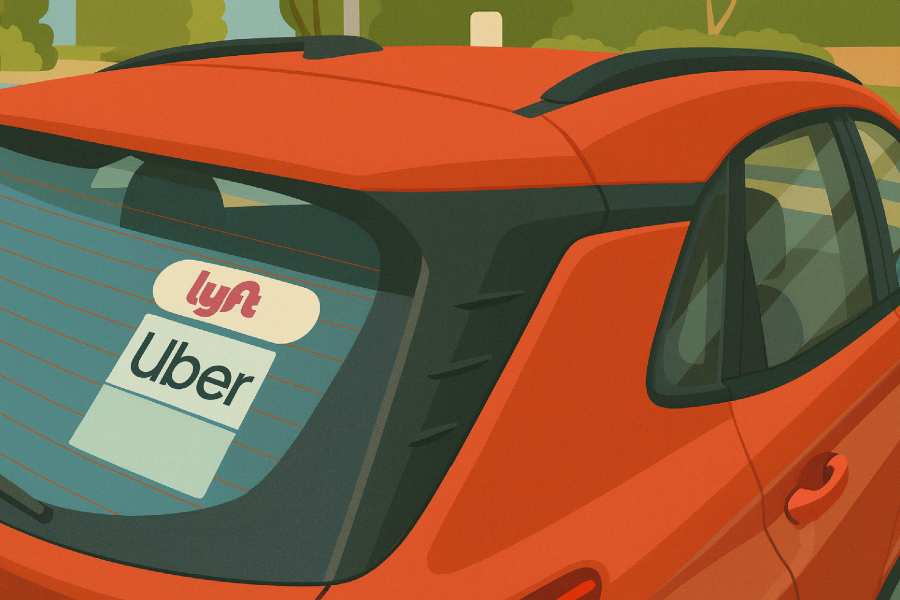
Why a Personal Injury Lawyer Matters More Than Ever Under the New Rideshare Laws
With California’s reduced insurance requirements for rideshare companies, injured passengers and drivers may now face tougher legal and financial battles after an accident. Understanding a driver’s legal responsibilities and rights is more important than ever under the new laws. If you’re hurt in a crash involving an Uber or Lyft vehicle (especially when an uninsured or underinsured driver is involved) it’s now more important than ever to have a knowledgeable personal injury and on your side.
Here’s how a lawyer can help navigate the new legal landscape under the updated California rideshare laws:
Maximize Recovery from Limited Insurance Pools
Under the new law, uninsured/underinsured motorist coverage drops significantly. In serious accidents, this may not come close to covering your medical bills, lost income, or pain and suffering. A personal injury attorney can:
-
Identify all available sources of compensation (Uber/Lyft policies, your own UM coverage, at-fault driver’s assets, etc.)
-
Coordinate claims between multiple insurers
-
Prevent insurance companies from lowballing your claim due to the lower policy limits
Investigate Liability and Build a Strong Case
With less money available under the default policy, rideshare companies and insurers may be more likely to dispute liability or shift blame. An experienced lawyer can:
-
Gather evidence (dashcam footage, driver app logs, witness statements, medical records)
-
Prove negligence — whether it’s on the part of the rideshare driver or a third party
-
Handle communication and negotiation with all insurance providers
Help You Understand Your Rights Under the New Laws
The rules around rideshare liability, insurance tiers, and personal coverage responsibilities have changed significantly — and most riders aren’t fully aware of these important updates. Navigating this complex new landscape can be overwhelming, but with the help of a skilled personal injury lawyer, they will:
-
Explain what the California rideshare deal means for your case
-
Clarify how the new laws affect the rights and responsibilities of independent contractors in the rideshare industry, including legal status, benefits, and liability
-
Help you understand your options if you’re injured as a rider, driver, or pedestrian
-
Ensure you don’t miss important deadlines or settlement opportunities
Fight for Full and Fair Compensation
Injuries from car accidents often involve more than just physical harm. A good lawyer fights to recover everything you’re entitled to, including a comprehensive range of damages that address the full impact of your injury. This includes:
-
Medical expenses (past and future)
-
Lost wages and loss of earning capacity
-
Pain and suffering
-
Emotional distress
-
Long-term disability or rehabilitation
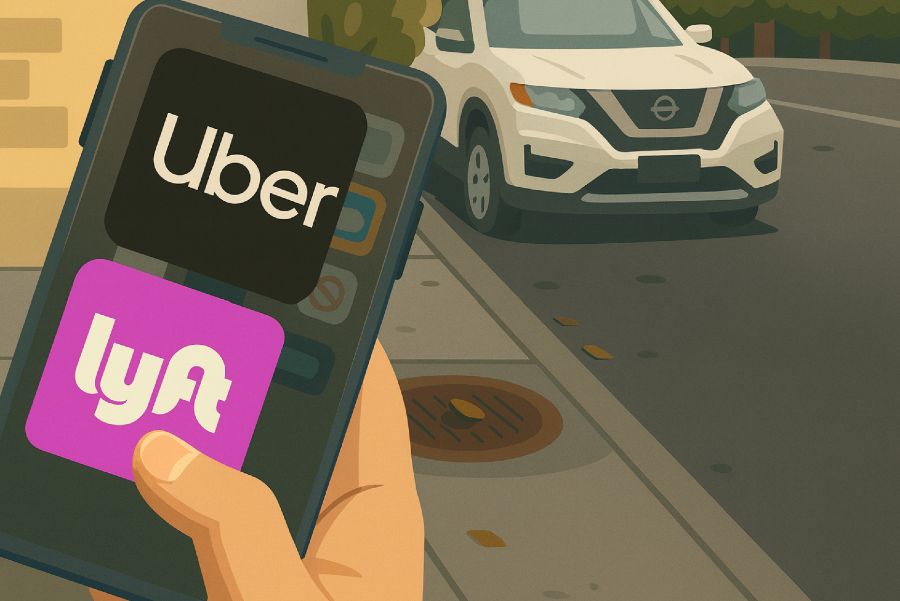
Injured in a Rideshare Accident? Call RMD Law Today
For California rideshare passengers and drivers, this new law brings big changes – especially if you’re hurt in an accident. With Uber and Lyft no longer required to carry $1 million in uninsured/underinsured motorist coverage, injury victims may now face a far more difficult road to full compensation. Medical bills, lost wages, and long-term care can easily exceed the new $60,000 per-person coverage limit, leaving victims scrambling for alternatives.
That’s why it’s critical to understand your legal rights and options. If you’ve been injured in an Uber or Lyft crash (whether as a rider, driver, or even as a pedestrian) don’t assume the insurance coverage will be enough. At RMD Law, we specialize in helping accident victims fight for the compensation they deserve, even in complicated rideshare claims. With the legal landscape shifting under this new law, having an experienced personal injury attorney in your corner could make all the difference in your recovery.
If you’ve been injured in a rideshare accident, don’t go it alone. Contact RMD Law today at (949) 828-0015 for a free, no obligation consultation.
FAQs
As of now, the rideshare unionization bill (AB 1340) and the insurance rollback bill (SB 371) have passed the California Legislature and are awaiting Governor Gavin Newsom’s signature. Once signed, the laws will go into effect based on the date specified in the legislation, which may be immediate or delayed (often January 1 of the following year). Until then, current rideshare insurance rules remain in place, including the $1 million UM/UIM coverage requirement.
Injured Uber or Lyft riders will no longer be protected by a $1 million uninsured/underinsured motorist (UM/UIM) policy. Instead, the new minimum is just $60,000 per person and $300,000 per accident. This may not be enough to cover medical bills and long-term care in serious crashes, especially when the at-fault driver has no insurance. Riders should review their own auto and health insurance for gaps in protection.
Possibly. The reduced insurance requirement lowers operational costs for Uber and Lyft, and lawmakers hope this will keep fares stable or lower. However, the formation of a driver union may result in future wage increases that could push fares up long-term. In the short term, riders may see fewer price hikes, but there’s no guarantee companies will pass those savings on.
Yes. With reduced coverage now provided by Uber and Lyft, frequent riders should consider increasing their personal uninsured/underinsured motorist (UM/UIM) coverage. Even if you don’t own a car, a non-owner policy can protect you when riding in someone else’s vehicle. Health insurance may help too, but it won’t cover lost wages or pain and suffering.
Absolutely. With lower insurance limits and more complex liability issues, working with a personal injury attorney is now more important than ever. An attorney can help identify all sources of compensation, negotiate with multiple insurers, and ensure you’re not left paying out of pocket after a serious rideshare accident.
- 7 Most Dangerous Roads in California for Pedestrians - December 19, 2025
- Reckless Driving in California: Definition, Penalties, and Real-World Consequences - December 15, 2025
- How Cities Like Los Angeles and San Francisco Use Enhanced Crosswalk Paint to Improve Safety - December 11, 2025

